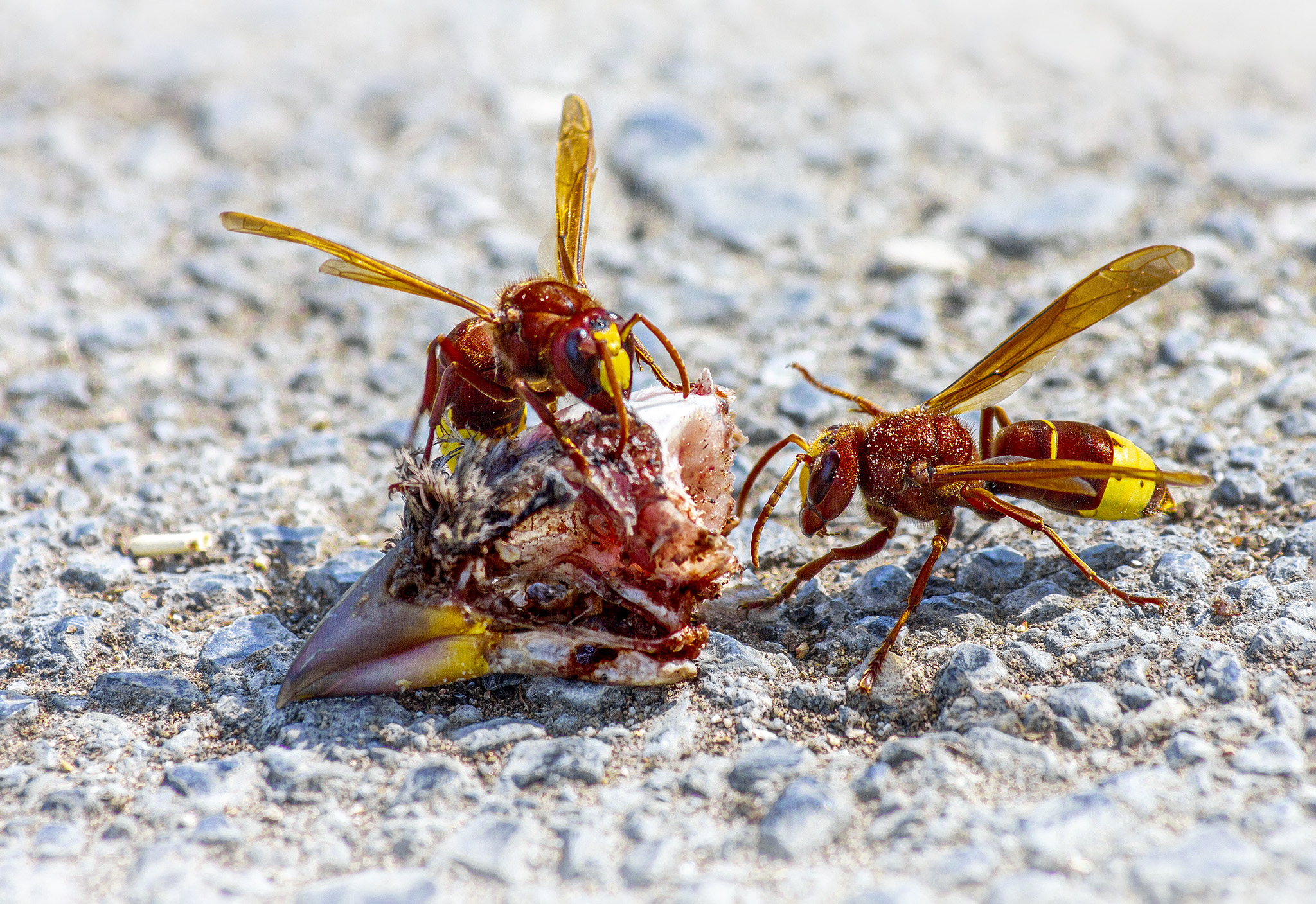The Oriental hornet (Vespa orientalis) is a species of hornet native to various regions of Asia, Africa, and parts of Europe. Here are some key features and characteristics of this fascinating insect:
- Appearance: Oriental hornets are typically around 2.5 to 3.5 centimeters in length. They have a distinct yellow and brown striped pattern on their abdomen. Unlike some other hornets, their coloration tends to be darker, with less yellow, giving them a more subdued appearance.
- Behavior: These hornets are known for their unique behavior of harvesting sunlight. They are active during daylight hours and often gather around light sources, including artificial ones, during the daytime. They exhibit a behavior known as photovoltaic behavior, where they absorb sunlight and convert it into energy, which is then used to power their activity.
- Nesting: Oriental hornets typically construct their nests underground. These nests can be found in various locations, including abandoned rodent burrows, tree roots, and other underground cavities. The nests are made from a papery material constructed by mixing wood fibers with their saliva.
- Diet: Oriental hornets are omnivorous, feeding on a variety of sources. They primarily prey on other insects, such as flies, caterpillars, and bees, which they capture and bring back to their nests to feed their larvae. Additionally, they are attracted to sugary substances and may feed on fruits, nectar, and other sweet materials.
- Defense: Like other hornets, Oriental hornets can sting repeatedly if they feel threatened or if their nest is disturbed. Their sting can be painful and potentially dangerous, particularly for individuals who are allergic to insect venom.
Overall, the Oriental hornet is a remarkable insect known for its unique behavior and adaptation to harvesting sunlight. While they play a role in controlling insect populations, they should be approached with caution due to their defensive capabilities.
Views: 21
Subscribe to the newsletter:
